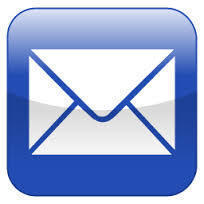|
Having trouble viewing this email? View it as a Web page.
September 25, 2018

Don't keep this great resource to yourself! Please share it with your colleagues and networks.
Fungal Disease Awareness Week is October 1–5, 2018. CDC
and partners have organized this week to highlight the importance of recognizing
serious fungal diseases early enough in the course of a patient’s illness to
provide life-saving treatment. Fungal diseases are often caused by fungi that
are common in the environment. Most fungi are not dangerous, but some types can
be harmful to health.
After natural disasters such as hurricanes, tornadoes, and
floods, excess moisture and standing water contribute to the growth of mold in
homes, office buildings, schools, and other nonindustrial buildings. When
returning to a home or other buildings that have been flooded, be aware that
mold may be present and may be a health risk for you or your family, including
people with weakened immune systems, asthma, mold allergies, chronic lung
conditions, and other breathing problems.
Possible Health Effects of Mold Exposure
People who are sensitive to mold may experience stuffy nose,
irritated eyes, wheezing, or skin irritation. People with asthma, allergies, or
other breathing conditions may be more sensitive to mold. People allergic to
mold may have difficulty breathing and shortness of breath.
People with weakened immune systems are more susceptible to
mold infections. This includes people with HIV infection, cancer patients
taking chemotherapy, and people who have received an organ transplant. People
with chronic lung diseases, such as chronic obstructive pulmonary disease
(COPD), may develop mold infections in their lungs. Both groups should avoid moldy
areas.
If you or your family members have health problems after
exposure to mold, contact your doctor or other health care provider.

Some Tips on Cleaning Up Mold
If there is mold growth in your home, it should be
cleaned up as soon as possible in addition to fixing any water problems,
such as leaks in roofs, walls, or plumbing. Controlling moisture in your home
is the most critical factor for preventing mold growth.
If you perform the cleanup yourself, wait to re-enter your home until
professionals tell you it is safe, with no structural, electrical, or other
hazards. It's important to wear protective clothing, especially a
special mask (an N-95 respirator), gloves, and goggles designed
to keep out dust and small particles. If you have a weakened immune system,
asthma, mold allergies, chronic lung conditions, or other breathing problems, you should not perform the cleanup yourself. Children should not do mold
cleanup.
To remove mold growth from hard surfaces use commercial
products, soap and water, or a bleach solution of no more than 1 cup of
household laundry bleach in 1 gallon of water. Follow the manufacturers’
instructions for use (see product label). Use a stiff brush on rough surface
materials such as concrete.
When removing mold, follow these tips:
- Always
follow manufacturer’s instructions when using bleach or any other cleaning
product.
- Never
mix bleach with ammonia or other household cleaners. Mixing bleach with
ammonia or other cleaning products will produce dangerous, toxic fumes.
- Open
windows and doors to provide fresh air.
- At a
minimum, wear an N-95 respirator, goggles, protective gloves, waterproof
boots, and long sleeves and pants during cleanup of affected areas.
- If you
plan to spend a lot of time removing moldy belongings or doing work like
ripping out moldy drywall, wear a half-face or full-face respirator.
Contact Us
 |
|
Email: epic@cdc.gov
Centers for Disease Control and Prevention
1600 Clifton Rd
Atlanta, GA 30333
Questions?
Contact CDC-INFO
800-CDC-INFO (800-232-4636) TTY: 888-232-6348
|
|